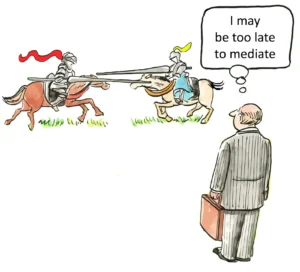Burglary vs. Robbery vs. Theft: Charges, Penalties & Defenses
The American legal system distinguishes between burglary, robbery, and theft with remarkable precision, though these terms are often used interchangeably in everyday conversation. Understanding the legal distinctions between these property crimes is essential for anyone navigating the criminal justice system, whether as a defendant, victim, or concerned citizen. Each offense carries its own unique elements, charges, penalties, and available defenses that can significantly impact case outcomes and sentencing.
The fundamental differences between these crimes lie in their execution and intent. Theft involves the unlawful taking of another’s property without permission, with the intent to permanently deprive the owner of that property. Robbery elevates this offense by adding the element of force or threat of force against a person. Burglary, contrary to popular belief, doesn’t necessarily involve theft at all—it requires the unlawful entry into a structure with the intent to commit a crime therein. These distinctions are not merely academic; they form the basis for charging decisions that can mean the difference between misdemeanor and felony prosecution.
The Legal Definition of Theft
Theft, also known as larceny in many jurisdictions, forms the foundation of property crimes in American jurisprudence. At its core, theft involves taking someone else’s property without their consent and with the intention of permanently depriving them of it. The simplicity of this definition belies the complexity of theft laws across the nation.
The legal elements of theft typically include the unauthorized taking and carrying away of someone’s personal property, with the specific intent to permanently deprive the owner of that property. This crime does not require force, threats, or breaking into structures—merely the unlawful taking itself. Common examples include shoplifting, pickpocketing, or stealing unattended items.
Most states classify theft based on the value of the stolen property, creating a hierarchy of offenses with escalating penalties. Petty theft generally involves property valued below a certain threshold—often $500 to $1,000, depending on the jurisdiction. This typically constitutes a misdemeanor, punishable by fines and potentially short jail sentences. Above this threshold, the crime becomes grand theft, a felony carrying more severe consequences including substantial prison time.
The modern legal landscape has expanded theft to encompass a variety of specialized forms, including identity theft, auto theft, and various forms of digital theft. Each of these specialized categories may carry its own distinct elements and penalties, reflecting the evolving nature of property crimes in the digital age.
Robbery: Theft Plus Force
Robbery represents a significant escalation from simple theft, incorporating elements that make it inherently more dangerous and therefore more severely punished. The distinguishing feature of robbery is the use of force, intimidation, or threat against a person to accomplish the theft. This human element transforms what would otherwise be a property crime into a violent offense against both person and property.
For a crime to qualify as robbery, several elements must typically be present. First, there must be a taking of property from another person or in their presence. Second, this taking must be accomplished through force or fear. Third, the property must be taken against the victim’s will. Finally, the perpetrator must intend to permanently deprive the owner of the property. The victim’s awareness of both the taking and the force or threat is essential—if someone is asleep while their property is stolen, for instance, the crime would not constitute robbery.
Armed robbery occurs when the perpetrator uses or threatens to use a deadly weapon during the commission of the crime. This significantly increases the severity of the offense and typically results in enhanced penalties. Similarly, aggravated robbery involves circumstances that make the crime particularly dangerous, such as causing serious bodily injury or targeting vulnerable victims like the elderly.
The penalties for robbery reflect its serious nature. As a violent felony, robbery typically carries substantial prison sentences, often ranging from several years to decades of incarceration. Armed robbery and aggravated robbery carry even harsher penalties, sometimes approaching those for homicide in certain jurisdictions.
Understanding Burglary
Burglary has evolved significantly from its common law origins, where it was defined as breaking and entering a dwelling at night with the intent to commit a felony therein. Modern statutes have broadened this definition considerably, removing many of the traditional limitations.
Today, burglary generally involves the unlawful entry into any structure—not just homes—with the intent to commit a crime inside. Contrary to popular belief, the crime need not be theft; the intent to commit any crime upon entry satisfies this element. Additionally, many jurisdictions no longer require actual “breaking”—entering through an unlocked door or open window can still constitute burglary if the entry was unauthorized.
Most states classify burglary into degrees based on various factors. First-degree burglary typically involves residential structures, occupied buildings, or aggravating factors such as nighttime entry or possession of weapons. Second-degree and third-degree burglary generally involve commercial buildings or unoccupied structures, with correspondingly lesser penalties.
The penalties for burglary vary widely based on the degree of the offense and the jurisdiction. First-degree burglary, as a serious felony, can result in prison sentences ranging from several years to decades. Lower degrees may result in shorter sentences but still typically constitute felonies rather than misdemeanors.
A particularly serious variant is aggravated burglary, which occurs when the perpetrator possesses a deadly weapon or explosive device during the commission of the crime. This offense carries some of the most severe penalties in the property crime spectrum, reflecting the heightened danger it presents to potential victims.
Comparative Analysis: Key Differences
The distinctions between burglary, robbery, and theft extend beyond academic interest—they fundamentally shape how these crimes are charged, prosecuted, and punished. Understanding these differences provides clarity on why seemingly similar acts can result in dramatically different legal consequences.
Theft, in its purest form, involves no confrontation with victims and no unauthorized entry into structures. It is primarily a crime against property rather than persons. This explains why theft generally carries the lightest penalties among the three offenses, particularly for lower-value items.
Robbery, by incorporating force or threats against persons, transforms a property crime into a violent offense. The presence of a victim who experiences fear or actual harm elevates the seriousness substantially. While theft focuses on the taking of property, robbery equally concerns itself with the means of taking and the impact on the victim.
Burglary centers on the unauthorized entry aspect rather than the taking itself. Indeed, a completed theft isn’t necessary for burglary charges—merely entering with criminal intent suffices. This focus on unlawful entry reflects the law’s concern with the violation of secure spaces and the potential for confrontation that such entries create.
These distinctions explain why a person who steals a $500 item from an unattended display might face misdemeanor theft charges, while someone who takes the same item after breaking into a closed store could face felony burglary charges. Similarly, using force or threats to take that same item directly from a person would constitute robbery, potentially resulting in even more serious felony charges.
Prosecution Strategies and Burden of Proof
Prosecutors approach each of these crimes with distinct strategies, tailored to the unique elements they must prove beyond a reasonable doubt. These strategic differences reflect the varying nature of the evidence typically available and the specific elements that constitute each offense.
For theft cases, prosecutors focus primarily on establishing that the defendant took property belonging to another without permission and with the intent to permanently deprive the owner of that property. Evidence typically includes security footage, witness testimony, possession of stolen items, and sometimes digital records of transactions or movements. The value of the stolen property becomes particularly important for determining whether the theft constitutes a misdemeanor or felony.
Robbery prosecutions center on proving the use or threat of force in addition to the taking of property. Victim testimony becomes crucial, as does any evidence corroborating the forceful nature of the encounter, such as injuries, weapons, or surveillance footage. Prosecutors must establish not only that property was taken, but that it was taken through means that placed the victim in fear or subjected them to actual force.
Burglary cases require prosecutors to establish unauthorized entry into a structure along with the intent to commit a crime therein. Evidence of forced entry, such as broken locks or windows, often plays a key role. However, proving the defendant’s intent at the time of entry presents a unique challenge. Prosecutors typically rely on circumstantial evidence, such as possession of burglary tools, statements made by the defendant, or patterns of behavior to establish this crucial element.
The burden of proof—establishing guilt beyond a reasonable doubt—applies equally to all three crimes. However, the nature of the evidence and the specific elements requiring proof create distinct challenges for each offense type.
Defenses Against Property Crime Charges
The legal system provides various defenses against burglary, robbery, and theft charges, some applicable across all three categories and others specific to particular offenses. These defenses can significantly impact case outcomes, potentially resulting in reduced charges, acquittals, or case dismissals.
Actual innocence remains the most straightforward defense across all property crimes. This may involve providing an alibi, challenging witness identifications, or presenting evidence that someone else committed the offense. The effectiveness of this defense depends largely on the strength of the prosecution’s evidence and the credibility of any contradicting evidence presented by the defense.
For theft charges specifically, claim of right can serve as a complete defense. This involves the defendant genuinely believing they had a legal right to the property in question, such as mistakenly taking what they believed was their own property or property they believed they were entitled to possess. Similarly, consent can negate theft charges if the defendant can establish they had the owner’s permission to take the property.
Robbery charges may be defended against by challenging the element of force or fear. If the defense can establish that no force was used or threatened, or that any force was unrelated to the taking of property, the charges might be reduced to simple theft. Additionally, duress might serve as a defense if the defendant can prove they were forced to commit the robbery under threat of imminent harm.
Burglary defenses often focus on the element of intent. If the defense can establish that the defendant entered the structure without the intent to commit a crime therein, a crucial element of burglary is negated. Similarly, challenging the unauthorized nature of the entry can be effective—if the defendant had permission to enter, even if that permission was limited, burglary charges may be inappropriate.
Voluntary intoxication may serve as a defense to specific-intent crimes like burglary and theft in some jurisdictions. If the defendant’s intoxication prevented them from forming the specific intent required for the offense, this might result in acquittal or reduction to a lesser charge. However, this defense has limited applicability and varies significantly by jurisdiction.
Constitutional defenses, such as challenging unlawfully obtained evidence under the Fourth Amendment or asserting violations of Miranda rights, apply across all three categories. These procedural defenses can result in the suppression of crucial evidence, sometimes making prosecution impossible.
Sentencing and Penalties
The American legal system imposes a graduated scale of penalties for property crimes, reflecting their varying degrees of severity and the different interests they violate. These penalties can range from relatively minor fines to decades of imprisonment, depending on the specific offense, aggravating factors, and the defendant’s criminal history.
Theft penalties typically correlate directly with the value of the stolen property. Petty theft or misdemeanor theft generally involves property valued below a statutory threshold (commonly $500-$1,000) and typically results in fines, restitution, probation, and potentially short jail sentences, usually less than one year. Grand theft or felony theft involves higher-value items and can result in state prison sentences ranging from one to several years, substantial fines, and restitution.
Robbery, as a violent felony, carries significantly harsher penalties. Base robbery charges typically result in prison sentences ranging from two to ten years, depending on the jurisdiction. Armed robbery or aggravated robbery involving weapons or resulting in injuries can lead to sentences of ten to twenty years or more. Some states impose mandatory minimum sentences for robbery, particularly when firearms are involved.
Burglary penalties vary based on the degree of the offense. Residential burglary or first-degree burglary typically results in prison sentences ranging from two to fifteen years. Commercial or non-residential burglary generally carries somewhat lighter sentences, typically one to ten years. Aggravated burglary involving weapons can result in sentences approaching or exceeding twenty years in some jurisdictions.
Across all three categories, sentencing enhancements may apply based on various factors. Prior convictions, particularly for similar offenses, can significantly increase sentences under habitual offender or “three strikes” laws. Crimes targeting vulnerable victims such as the elderly or disabled often carry enhanced penalties. Similarly, crimes committed as part of organized criminal activity typically result in more severe punishment.
Many jurisdictions have moved toward alternative sentencing for first-time or non-violent offenders, particularly in theft cases. These alternatives may include diversion programs, community service, restitution-focused sentences, or probation in lieu of incarceration. However, such alternatives become increasingly unlikely as the seriousness of the offense increases, particularly for robbery and aggravated forms of burglary.
Recent Trends in Property Crime
The landscape of property crime in America continues to evolve, shaped by technological advances, changing criminal tactics, and shifting law enforcement priorities. Recent years have witnessed several notable trends in how burglary, robbery, and theft manifest and are addressed by the criminal justice system.
Property crime rates have generally declined over the past decade, with the COVID-19 pandemic accelerating some of these changes. Residential burglaries decreased significantly during 2020-2024, likely influenced by increased home occupancy during lockdowns and remote work arrangements. The first half of 2024 saw residential burglary rates 14% lower than the same period in 2023, and 39% lower than in 2019. Conversely, non-residential burglaries saw a spike early in the pandemic, though they have since declined, with rates in early 2024 being 10% lower than in early 2023.
Retail theft has emerged as a particular concern, with organized retail crime receiving increased attention from media, law enforcement, and legislators. Reports of shoplifting increased by 24% in the first half of 2024 compared to the same period in 2023. This trend has prompted legislative responses in several states, including California, which enacted a significant package of laws in 2024 to address retail theft through enhanced penalties and expanded prosecution tools.
Motor vehicle theft represented another notable trend, rising consistently since 2020 before finally beginning to decline in early 2024, when rates were 18% lower than in the first half of 2023. Despite this recent improvement, vehicle theft rates remain substantially higher than pre-pandemic levels, with rates more than doubling between 2019 and 2024.
The phenomenon of “crime tourism” has gained attention, particularly in connection with high-profile burglaries. This trend involves international theft rings, often from South America, traveling to the United States specifically to target affluent neighborhoods and high-value properties. These sophisticated operations employ advanced tactics to bypass security systems and have been linked to burglaries targeting professional athletes and other wealthy individuals.
Legislative responses to property crime have generally trended toward increased penalties and expanded prosecution tools, particularly for organized retail theft and repeat offenders. California’s 2024 legislative package exemplifies this approach, creating new felony provisions for repeat theft offenders, allowing for burglary charges from unlocked vehicles, and enhancing penalties for organized retail theft rings.
The Impact of Technology on Property Crimes
Technology has fundamentally transformed both the commission and prevention of property crimes, creating new vulnerabilities while simultaneously offering powerful tools for security and law enforcement. This technological evolution continues to reshape the landscape of burglary, robbery, and theft in ways that challenge traditional legal frameworks.
Digital technology has created entirely new categories of theft that were unimaginable a generation ago. Identity theft has become one of the most prevalent property crimes, with criminals leveraging data breaches, phishing schemes, and other digital tactics to steal personal information. Similarly, various forms of cybertheft target digital assets, from cryptocurrency to intellectual property, challenging legal systems designed around physical property concepts.
For traditional property crimes, technology has altered criminal methodologies. Modern burglars increasingly use social media to identify vacant homes, research potential targets, and plan their crimes. Sophisticated theft rings employ signal jammers to disable security systems and electronic tools to defeat modern locks and security measures. Even robbery has evolved, with criminals using online marketplaces to lure victims to isolated locations under the pretense of legitimate transactions.
Simultaneously, technology has revolutionized crime prevention and detection. Advanced security systems, including AI-powered surveillance, biometric access controls, and remote monitoring capabilities, have made many traditional burglary techniques obsolete. GPS tracking in vehicles and electronic devices has dramatically improved recovery rates for stolen property. Digital forensics has become crucial in solving property crimes, with electronic evidence often proving more reliable than traditional physical evidence or eyewitness testimony.
Law enforcement agencies increasingly leverage technology in their investigative work. Predictive policing algorithms help identify potential hot spots for property crimes, allowing for more efficient resource allocation. Automated license plate readers assist in tracking stolen vehicles and identifying suspects. Digital evidence from cell phones, surveillance systems, and online activities frequently provides crucial leads in property crime investigations.
The legal system continues to adapt to these technological changes, though often at a slower pace than the technology itself evolves. Courts have had to address questions about the admissibility of digital evidence, the constitutional implications of new surveillance technologies, and the application of traditional property crime statutes to digital assets. Legislatures have responded by updating criminal codes to address new forms of technology-facilitated theft, though gaps and ambiguities remain in many jurisdictions.
Regional Variations in Property Crime Laws
The federalist structure of American governance creates significant regional variations in how property crimes are defined, charged, and punished. While the core concepts of burglary, robbery, and theft remain relatively consistent nationwide, the specific elements, grading systems, and penalty structures can differ substantially from state to state.
Theft classification thresholds—the dollar values that separate misdemeanor from felony charges—vary dramatically across jurisdictions. Some states set this threshold as low as $500, while others have raised it to $2,500 or higher. These variations can mean that identical acts might constitute felonies in one state but misdemeanors in another. Similarly, the grading of theft offenses into various degrees or classes follows different patterns across states, with some recognizing as many as five distinct levels of theft offenses.
Burglary definitions show similar variations. While all states have moved beyond the common law requirement of nighttime entry, other elements differ significantly. Some states maintain separate statutes for residential and commercial burglary, while others use a degree system based on various aggravating factors. The intent requirement also varies—some jurisdictions require intent to commit a felony, while others include intent to commit any crime, including misdemeanors.
Robbery statutes show perhaps the greatest consistency across jurisdictions, though penalties can vary substantially. Most states recognize distinctions between simple robbery and armed or aggravated robbery, but the specific enhancements and sentencing ranges differ. Some states impose mandatory minimum sentences for armed robbery, while others maintain greater judicial discretion in sentencing.
Sentencing approaches also reflect regional philosophies toward criminal justice. States with “truth in sentencing” laws typically require offenders to serve a substantial portion (often 85%) of their sentences before becoming eligible for parole. Other states maintain more flexible systems with earlier parole eligibility, particularly for non-violent property offenses. Similarly, approaches to habitual offender enhancements vary widely, with some states imposing dramatic sentence increases for repeat offenders while others maintain more moderate enhancement structures.
Alternative justice approaches also show regional patterns. Some jurisdictions have embraced restorative justice models for property crimes, focusing on restitution and rehabilitation rather than incarceration. Others maintain more traditional punitive approaches, particularly for more serious property offenses. Diversion programs, drug courts, and other specialized approaches to addressing underlying causes of property crime have gained traction in many jurisdictions but remain unavailable or limited in others.
The Conservative Approach to Property Crime
The conservative legal perspective on property crimes emphasizes several core principles: respect for property rights, personal responsibility, appropriate punishment, and the protection of law-abiding citizens. This approach influences both the interpretation of existing laws and advocacy for legal reforms in the property crime domain.
Property rights hold a central place in conservative legal philosophy, viewed as essential to ordered liberty and economic prosperity. This perspective sees property crimes not merely as offenses against individual victims but as attacks on the social fabric that enables peaceful coexistence and economic activity. Consequently, conservative jurisprudence typically favors robust enforcement of property crime laws and meaningful consequences for offenders.
The principle of judicial restraint, championed by Justice Clarence Thomas and other conservative jurists, calls for a strict interpretation of criminal statutes according to their original meaning, rather than expanding their scope through judicial innovation. This approach emphasizes that criminal laws should be clear and predictable, allowing citizens to understand what conduct is prohibited and providing consistent application across similar cases.
Conservative approaches to sentencing for property crimes typically emphasize proportionality and deterrence. This perspective recognizes gradations in severity—distinguishing between non-violent theft and violent robbery, for instance—while maintaining that meaningful consequences are necessary to deter future criminal conduct. For more serious property crimes, particularly those involving violence or habitual offenders, conservative approaches often favor substantial incarceration periods to protect the public and communicate societal disapproval.
At the same time, the conservative perspective increasingly recognizes the value of targeted reforms for certain categories of property offenses. Many conservative policymakers have supported alternatives to incarceration for first-time, non-violent offenders, particularly when focused on restitution to victims and addressing underlying issues such as substance abuse. This approach reflects both fiscal conservatism—recognizing the high costs of incarceration—and moral principles regarding redemption and second chances.
Recent conservative-led reforms in several states have focused on ensuring that criminal penalties match the severity of the offense, sometimes increasing thresholds for felony theft charges while simultaneously enhancing penalties for organized retail theft, repeat offenders, and crimes targeting vulnerable victims. This nuanced approach seeks to focus limited criminal justice resources on the most serious offenders while providing proportionate responses to lesser property crimes.
The federalist principle of state autonomy in criminal law remains central to the conservative approach. Rather than advocating for uniform national standards, conservative legal thought typically supports allowing states to serve as “laboratories of democracy,” developing varied approaches to property crime based on local conditions, values, and needs. This creates space for innovation while respecting the constitutional division of authority between federal and state governments.
Victim Rights and Restitution
The rights of property crime victims have gained increased recognition in the American legal system over recent decades, shifting from a narrow focus on punishing offenders to a more comprehensive approach that includes victim restoration and participation. This evolution reflects growing awareness of the profound impacts these crimes can have on victims beyond mere financial loss.
Property crimes can inflict significant psychological harm on victims, particularly in cases of residential burglary or robbery. The violation of personal space and safety can lead to lasting trauma, anxiety, and fear. Recognition of these non-economic harms has influenced both victim services and, in some cases, sentencing decisions. Victim impact statements now commonly address these psychological dimensions, giving courts a more complete understanding of the crime’s effects.
Restitution represents a cornerstone of victim rights in property crime cases. Courts increasingly order offenders to compensate victims not only for the direct value of stolen property but also for related expenses such as property repairs, security upgrades, and even counseling services necessitated by the crime. Federal legislation, including the Justice for All Act, has strengthened victims’ rights to full restitution, making this a standard rather than exceptional component of sentencing.
Beyond financial compensation, victims’ procedural rights have expanded significantly. Most jurisdictions now guarantee victims the right to notification of key proceedings, the opportunity to be heard at sentencing, and information about the status of their case and the offender. These procedural rights help restore a sense of agency to victims and ensure their perspectives are considered throughout the criminal justice process.
Restorative justice approaches have gained traction in property crime cases, offering alternatives or supplements to traditional prosecution. These programs typically involve facilitated dialogue between victims and offenders, allowing victims to express the impact of the crime directly and participate in developing restitution plans. While not appropriate for all cases, these approaches have shown promise in addressing victims’ needs for closure and recognition while promoting offender accountability.
For businesses victimized by theft, robbery, or burglary, recent legislative innovations have created additional protections. Some states now allow businesses to obtain restraining orders against individuals convicted of stealing from them, preventing repeat victimization. Enhanced penalties for organized retail theft reflect recognition of the substantial harm these crimes inflict on businesses and, ultimately, consumers through increased prices.
The conservative legal perspective generally supports robust victim rights, viewing them as essential to a just legal system that balances the interests of all parties. This approach emphasizes that justice requires not only appropriate punishment for offenders but also meaningful restoration and support for those harmed by criminal acts.
Prevention Strategies and Security Measures
Preventing property crimes requires a multifaceted approach that combines individual security measures, community efforts, and systemic reforms. Effective prevention strategies address both the opportunity for crime and, in some cases, the underlying motivations that drive criminal behavior.
For individuals and businesses, physical security measures remain the first line of defense against property crimes. Modern security systems have evolved far beyond basic alarms, now incorporating smart technology, remote monitoring capabilities, and integration with mobile devices. Video surveillance has become increasingly affordable and sophisticated, with AI-enhanced systems capable of distinguishing between routine activity and potential threats. These technological advances have made effective security accessible to a broader range of property owners.
Environmental design plays a crucial role in crime prevention. The principles of Crime Prevention Through Environmental Design (CPTED) focus on creating spaces that naturally deter criminal activity through visibility, territorial reinforcement, and access control. Simple measures such as improved lighting, clear sightlines, and defined boundaries between public and private spaces can significantly reduce vulnerability to burglary and theft.
Community-based prevention efforts complement individual security measures. Neighborhood watch programs, when properly implemented and sustained, have shown effectiveness in reducing property crimes through increased vigilance and reporting of suspicious activity. Similarly, business improvement districts often incorporate security measures that benefit all participating establishments, creating zones of enhanced protection against retail theft and commercial burglary.
Law enforcement agencies increasingly employ data-driven approaches to property crime prevention. Predictive policing uses historical crime data to identify potential hot spots and deploy resources proactively rather than reactively. Problem-oriented policing focuses on addressing underlying conditions that create opportunities for property crime, such as abandoned buildings or inadequate lighting in public spaces.
For higher-value targets, specialized security measures may be warranted. High-net- worth individuals, luxury retailers, and businesses handling valuable assets often invest in advanced security protocols that go beyond standard alarm systems. These may include biometric access controls, private security personnel, reinforced safes, and real-time monitoring by professional security firms. The use of artificial intelligence in surveillance systems allows for rapid detection of unusual activity, while integration with law enforcement networks can trigger immediate response in the event of a breach. For high-profile targets, layered security—combining physical barriers, electronic surveillance, and human oversight—serves as a strong deterrent against both opportunistic and organized criminal efforts.
Insurance also plays a critical role in mitigating the financial impact of burglary, robbery, or theft. High-value property owners often secure specialized insurance policies that cover not only the replacement value of stolen items but also the costs associated with business interruption, property damage, and even ransom in the case of high-stakes robberies. Insurers may require policyholders to implement specific security measures as a condition of coverage, further incentivizing robust prevention strategies. This symbiotic relationship between private security and insurance markets reflects a broader trend toward risk management in the face of evolving criminal tactics.
The legal system recognizes the unique vulnerabilities of high-value targets and, in some jurisdictions, imposes enhanced penalties for crimes involving significant financial loss or targeting critical infrastructure. Laws addressing organized retail theft and aggravated burglary often carry stiffer sentences when the value of stolen goods exceeds statutory thresholds or when the crime disrupts essential services. These legal provisions aim to deter sophisticated criminal enterprises that view high-value targets as lucrative opportunities.
Public-private partnerships have emerged as a powerful tool in combating property crimes against high-value assets. Law enforcement agencies collaborate with private security firms, industry associations, and technology providers to share intelligence, coordinate responses, and develop best practices. Initiatives such as real-time crime centers and fusion centers facilitate rapid information exchange, enabling authorities to track patterns, identify suspects, and recover stolen property more efficiently. These partnerships underscore the importance of a coordinated approach to crime prevention, particularly as criminal networks become more organized and technologically adept.
Education and training are equally vital in reducing vulnerability to property crimes. High-net-worth individuals and businesses often participate in security awareness programs that teach staff and family members how to recognize suspicious behavior, respond to security breaches, and interact with law enforcement. Regular drills and scenario planning ensure that all stakeholders are prepared to act decisively in the event of an incident. This proactive mindset, coupled with ongoing investment in security infrastructure, forms the backbone of effective prevention for those most at risk.
The broader community also benefits from the security measures adopted by high-value targets. Enhanced surveillance, improved lighting, and increased law enforcement presence in areas with luxury retailers or affluent residents can have a spillover effect, reducing crime rates for neighboring properties. However, this dynamic also raises important questions about equity and access to security resources, as not all individuals or businesses can afford the same level of protection. Policymakers must balance the need for robust security with the imperative to ensure that all citizens enjoy equal protection under the law.
The rise of cybercrime adds another layer of complexity to the protection of high-value assets. Digital theft, data breaches, and ransomware attacks can inflict losses that rival or exceed those of traditional property crimes. High-net-worth individuals and businesses are frequent targets for cybercriminals seeking financial gain or sensitive information. As a result, cybersecurity has become an integral component of comprehensive security strategies, with investments in firewalls, encryption, and incident response plans now as critical as physical locks and alarms.
Legal frameworks are adapting to address these new threats. Laws governing identity theft, data privacy, and computer crimes have expanded to cover a wide range of digital offenses. Prosecutors now routinely pursue charges under both traditional property crime statutes and specialized cybercrime laws, reflecting the convergence of physical and digital security concerns. Defense attorneys, in turn, must be well-versed in both domains to effectively represent clients accused of technologically sophisticated offenses.
The interplay between technology, law, and individual rights remains a central theme in the ongoing evolution of property crime prevention. As surveillance capabilities expand, courts are increasingly called upon to balance the needs of law enforcement and private security against constitutional protections such as the Fourth Amendment’s guarantee against unreasonable searches and seizures. The conservative legal perspective, emphasizing original intent and judicial restraint, often counsels caution in expanding surveillance powers without clear legislative authorization. This approach seeks to preserve the delicate balance between public safety and personal liberty that underpins the American legal tradition.
Community engagement remains a cornerstone of effective property crime prevention. Neighborhood watch programs, business coalitions, and public awareness campaigns foster a culture of vigilance and mutual support. Law enforcement agencies encourage citizens to report suspicious activity, participate in crime prevention workshops, and collaborate on local safety initiatives. These grassroots efforts complement formal security measures, creating a multi-layered defense against burglary, robbery, and theft.
Restitution and victim support services are critical components of the post-crime response. Victims of property crimes often face not only financial loss but also emotional distress and a sense of violation. Many jurisdictions offer victim assistance programs that provide counseling, financial aid, and guidance through the legal process. Restitution orders, as part of criminal sentencing, aim to make victims whole by requiring offenders to compensate for losses. The conservative approach to criminal justice emphasizes the importance of restoring victims and holding offenders accountable, reinforcing the moral foundation of the legal system.
The future of property crime law will be shaped by ongoing debates over sentencing reform, technological innovation, and the allocation of law enforcement resources. Some policymakers advocate for harsher penalties and expanded prosecutorial tools to combat rising concerns over organized retail theft and repeat offenders. Others call for a more nuanced approach that distinguishes between violent and non-violent property crimes, prioritizing rehabilitation and restitution for first-time or low-level offenders. The conservative perspective generally supports strong enforcement and meaningful consequences, while recognizing the need for proportionality and the efficient use of public resources.
Emerging trends such as the use of artificial intelligence in crime prediction, the proliferation of smart home technology, and the increasing sophistication of criminal enterprises will continue to challenge traditional legal frameworks. Legislators and courts must remain vigilant, ensuring that laws keep pace with changing realities while upholding the principles of due process and equal protection. The adaptability of the American legal system, grounded in constitutional values and responsive to societal needs, remains its greatest strength in the ongoing fight against property crime.
For individuals facing charges of burglary, robbery, or theft, understanding the nuances of each offense is crucial. The specific elements of the crime, the available defenses, and the potential penalties can vary widely depending on the facts of the case and the jurisdiction. Consulting with a qualified criminal defense attorney is essential for navigating the complexities of the legal process and protecting one’s rights. While this article does not provide legal advice, it underscores the importance of informed decision-making and proactive engagement with the justice system.
For victims, the path to recovery often involves more than simply replacing lost property. Emotional healing, restoration of a sense of security, and participation in the legal process are all vital steps. The legal system offers a range of tools and resources to support victims, from restitution and victim impact statements to counseling and community support programs. Engaged citizens, robust legal protections, and a commitment to justice form the foundation of a society resilient to the challenges posed by property crime.
In the final analysis, the distinctions between burglary, robbery, and theft are more than legal technicalities—they reflect society’s values, priorities, and commitment to justice. By understanding these differences, investing in prevention, and supporting both victims and the accused through fair legal processes, communities can foster safety, accountability, and respect for the rule of law. The ongoing evolution of property crime law will demand vigilance, adaptability, and a steadfast commitment to the principles that have long defined the American legal tradition.
Citations:
- Theft Robbery Burglary Differences
- Robbery Burglary Theft Explained
- Burglary Defense Strategies
- Crime Trends in US Cities
- California Retail Crime Crackdown
- Study on Property Crime Impacts
- Cybersecurity Keywords for SEO
- Theft Burglary Robbery Crimes
- Burglary vs Theft Legal Implications
- Theft Robbery Burglary FAQs
- Joe Burrow Home Burglary
- California New Laws 2025
- Burglary vs Robbery Comparison
- Burglary Robbery Theft Differences
- Theft Burglary Robbery Explained
- Theft Robbery Burglary Distinctions
- Reddit on Theft Robbery Burglary
- Burglary Sentencing in Texas
- Burglary Charge Defense Strategies
- Burglary Robbery Theft in California
- Robbery vs Burglary Differences
- Legal Strategies for Burglary Defense
- Robbery and Burglary Explained
- Burglary Penalties and Sentencing
- Best Defenses for Burglary Charges
- Burglary Fact Sheet OVC
- Folsom Crime Report Burglaries
- Joe Burrow House Burglary Arrests
- Common Items Stolen in Burglaries
- Chilean Nationals Charged in Burglaries
- Teens Arrested for Soap Lake Burglary
- Indian American Homes Robbed Boston
- New York Men Arrested Burglary
- Proposition 36 California Laws
- Caldwell Idaho Walmart Theft Case
- FBI Warning on Athlete Burglaries
- Texas Criminal Punishment Bills
- FBI Warning on Athlete Home Burglaries
- Narratives of Crime and Disorder
- ScienceDirect Study on Property Crime
- Forensic Psychology on Acquisitive Crime
- Portsmouth Research on Crime Trends
- How Keyword Thieves Steal Rankings
- CPC Study on Crime Impacts
- Confusion Between Robbery and Burglary
- SEO Keywords for Security Installers
- Princeton Scholar on Criminal Justice
- Stealing Competitor Keywords for SEO
- Taxing Times Drug Robbery Study
- UTexas Study on Property Crimes
- Theft Robbery Burglary Penalties
- Burglary Robbery Theft Larceny Differences
- Legal Differences Robbery Burglary
- Theft Robbery Burglary in Philadelphia
- Understanding Burglary Robbery Theft
- PA Theft Laws Explained
- Robbery vs Burglary Legal Implications
- Theft Robbery Burglary Breakdown
- Pennsylvania Theft and Robbery Statutes
- Lawyers.com on Theft vs Robbery
- Robbery Burglary Theft in Florida
- Burglary Crimes Penalties Overview
- Common Burglary Defenses Explained
- Temple Street Burglary Indictments
- Chileans Charged in Athlete Burglaries
- Edwards Man in Armed Robbery Case
- Proposition 36 Blog Post
- Contextual Use of Synonymous Verbs
- Canadian Criminal Notebook on Robbery
- Nolo on Robbery vs Burglary
- Burglary vs Robbery Charges
- Theft Robbery Burglary Differences




















